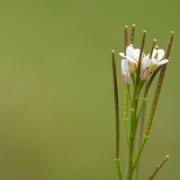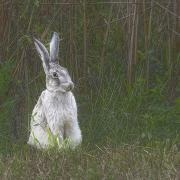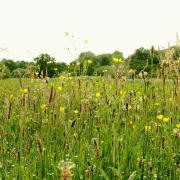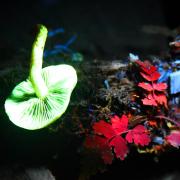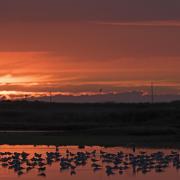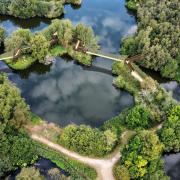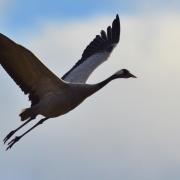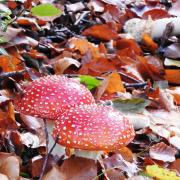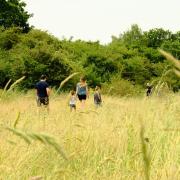Norfolk Wildlife Trust ambassador Nick Acheson marvels at this beautiful creature’s ability to ‘plant woods’

Consider the jay. That such a bird should exist among us — visit our gardens and haunt our Norfolk woods — is miraculous. Whereas the rest of our clever crows are magnificent in black, or pied with white or grey, the jay combines intellect with plumage of arresting beauty.
If you had never seen a jay, or heard of one, finding its illustration in a book, you would gasp and wonder from what far realm of tropical beauty such a creature hailed. Yet it hails from the woods and woodland edge all around us. I see them in the heathy oak wood a couple of hundred metres from my door. I see them in the birch, willow and hawthorn scrub along the old railway line a hundred metres further on. In September, I see them from my desk.
A jay is nature’s way of moving acorns uphill, of shifting woodland up towards the line at which climate will no longer sustain it. A jay, naturally, sees itself as no such thing. It sees itself — inasmuch as it sees itself at all — as a jay’s way of shifting jay genes one generation further along in the great story of life. But when I see jays from my desk in September, they are shifting acorns, doing the all important work of planting woods.
Planting woods: there’s the rub. At the last election political parties competed to claim they would plant more trees in the UK landscape, to offset the disastrous effects of changing climate. Imagine that: politicians competing to sound green. As so often, however, our politicians were missing the deeper point. A tree is not a tree is not a tree.
How nature brings comfort to me
Even from a purely mathematical point of view, carbon sequestration varies enormously between species, between the same species growing in different environments, between the same species in monoculture and in biodiverse woodlands, bristling with life. Plus there are innumerable collateral benefits, in addition to carbon storage, of self-forming and self-sustaining natural woods: soil creation, water retention, water distribution, beauty, recreation and the shouldn’t-have-to-be-stated benefit of offering a home to so much of our native wildlife. In their virtue-signalling promises to plant more trees than each other, politicians could — literally — not see the woods for the trees.
Woods are good. We need real woods. Jays, it so happens, make them. For the most part, foresters plant immaculate, mountain-taming rows of non-native conifers, marching like Great Birnam Wood to Dunsinane across the UK landscape. Jays, by contrast, plant complex mind-maps of native acorns, remembering the locations of thousands of proto-oaks, to be recovered and eaten later in the year, or next, when times are hard. Their placing of acorns is thought out but free, unpredictable but perfect, creating — if they germinate and oaks then grow — the kind of complex, edge-laden, non-uniform landscape in which so much of our wildlife thrives.
How, though, do they grow? Jays plant acorns to be eaten, and eaten acorns do not grow. Consider the goshawk, banana-taloned slayer of all she sees, shredder of squirrels and wielder of fear in corvid flocks. A goshawk is more than capable of ending a jay’s life this winter. And if that one jay killed has planted just 500 acorns this September, acorns which no other jay knows to find, here are 500 potential oaks, growing twisted and sculpted by weather and wild, sequestering carbon, sheltering life in every rugged crack.
Consider the jay: big-eyed and speckle-crowned, black-tailed and white-rumped, pink-necked and sky-shouldered. Perfect. This September as I daydream at my desk, eyes lost on the distant common, I do not see a jay with its crop rammed with acorns. I see nature recolonising our landscape, fly by fly, mole by mole, oak by one-day crooked oak. I see hope — our only hope — of averting climate catastrophe and human crisis. In nature’s unbent stochasticity lie the only seeds of our future, and all the stories of our past.





